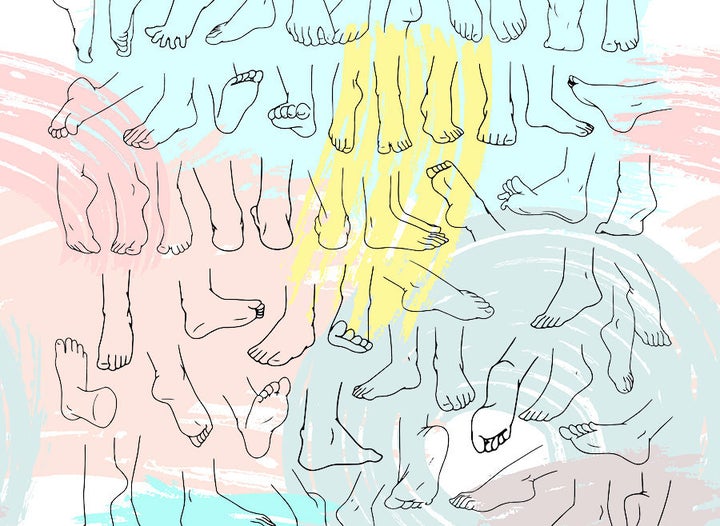Anyone who had the pleasure of watching Olivia Colman’s Oscar-winning performance as Queen Anne in ‘The Favourite’ will undoubtedly have pitied the character as she battled gout, an intensely painful form of arthritis.
But while it might seem like a condition consigned to the history books, gout is on the rise in England. Hospital admissions for gout have rocketed since 2010, it’s been reported – rising from 65,000 in 2010 to just over 165,000 in 2018.
Dr Fiona Chikusu, GP and clinical adviser for Versus Arthritis, attributes this to longer life expectancy and because more people are becoming overweight or obese. Increased alcohol consumption and stressful lifestyles might also be to blame.
So what do we need to know about gout? And is it possible to prevent it?

What Is Gout?
Gout is caused by excess uric acid in the bloodstream, which then builds up in the joints, forming urate crystals. It occurs as a result of the body trying to break down, and remove, purines (found naturally in food) through urine. But sometimes the kidneys can’t remove all the purines which means tiny crystals build up in the body tissues and joints. “This happens particularly in cooler parts of your body, like your hands and your feet, which is why they are more likely to be affected,” says Dr Nicola Read, clinical fellow at Bupa UK.
A number of factors can increase the likelihood of gout, including an unhealthy diet, crash dieting, stress, drinking alcohol, prolonged illness, injury, or because of certain types of medication. According to the UK Gout Society, some people are also more likely to develop gout due to an inherited abnormality – although this is less common.
The illness can make simple, everyday activities really difficult to carry out. It is one of the most common types of arthritis, affecting 2.5% of adults in the UK, with men more affected than women. The former tend to get it from puberty onwards while among women it’s far more common post-menopause.
Symptoms
The main sign of gout is sudden, severe joint pain – often in the night. “The skin over an affected joint will often appear red and shiny and may peel,” says Dr Chikusu, “and the joint will feel hot, swollen and very painful.”
Joints which are typically affected include the big toe, fingers, wrists, elbows or knees.
“Attacks can render you immobile and leave you feeling generally unwell and feverish, all of which can last for between three and 10 days,” says Dr Read. ”After this, the joint should return to normal, without any pain or swelling. Unfortunately, gout often returns, initially in the same joint, but it can also affect other joints.”
If left untreated, attacks can become more common and spread to new joints. If the pain gets worse and you have a high temperature, you should call 111 or book an emergency GP appointment as it might be a sign of infection.
Treatment
If you’re experiencing symptoms of gout, you should book in to see your GP who will perform a clinical assessment. “If gout is likely, they will offer medication to treat the symptoms,” says Dr Chikusu.
Gout attacks are usually treated with anti-inflammatory medicine like ibuprofen, according to NHS Choices, but if symptoms don’t improve in three to four days, patients might be given steroids.
If a person has more than three attacks in a year they may also be offered a medication called allopurinol, which helps to keep urate levels low. Prescriptions for allopurinol rose from three million in 2008 to 5.5 million in 2017, according to NHS data.
Some people are fortunate enough to only have one gout attack in their lifetime, while others might experience chronic gout, where it keeps coming back. The good news is it is possible to manage and relieve symptoms through changes to diet and lifestyle.
“Maintaining a healthy weight, reducing your intake of alcohol, avoiding high-purine foods and staying hydrated can all help to ease the attacks of gout,” says Dr Chikusu. Some examples of high-purine foods include: some fish, seafood and shellfish (anchovies, sardines, herring, mussels, codfish, scallops, trout and haddock), and meats such as bacon, turkey, veal, venison and organ meats like liver.
Prevention
NHS Choices has a range of pointers for people wanting to avoid gout or reduce their chances of an attack happening again. Getting to a healthy weight (without crash-dieting) is an important route to take, as is eating a healthy balanced diet with lots of vegetables.
Some types of alcohol (such as beer, stout and port wine) are high in purine, according to Bupa, which is why people at risk of gout are advised to reduce intake – try having at least two alcohol-free days a week. Instead, drink plenty of fluids to avoid dehydration and help keep your kidneys healthy (water is always best).
The health service also advises exercising regularly (trying not to put pressure on impacted joints), quitting smoking and asking your GP about whether you should take vitamin C supplements.
- Update: The article originally stated that alcohol is high in purine and has been updated to acknowledge that this isn’t the case for all types of alcohol.